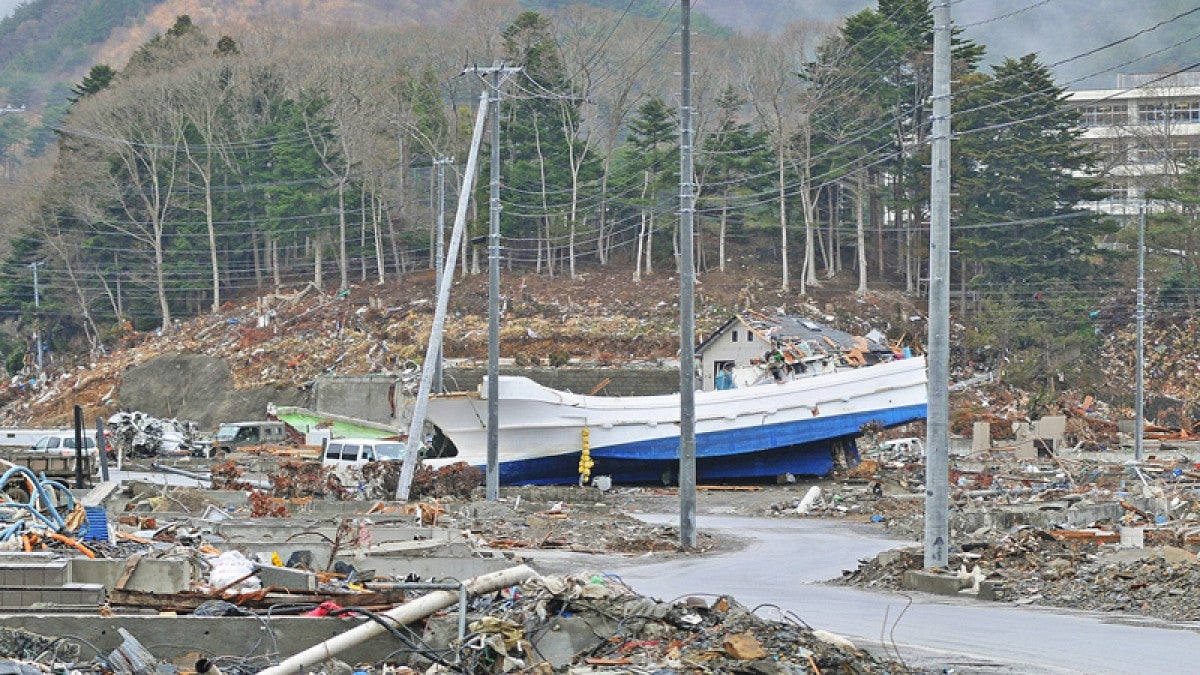The world's biggest earthquakes — those reaching magnitude 8.5 and stronger — occur on mostly flat faults such as the West Coast's Cascadia Subduction Zone, according to UO geologists in the Nov. 25 issue of the journal Science.
Large earthquakes, known as megaquakes, were long thought to occur only at the boundary between fast-converging, young tectonic plates, but that theory collapsed with the magnitude 9.4 quake in Indonesia in 2004 and the 9.0 quake in Japan in 2011. Since then megaquakes were viewed as possible on any large fault.
In the Science paper, the researchers present the idea that fault curvature is a key parameter for determining where really big quakes happen.
"The way people in the science community think about earthquakes is that some fault areas resist failure more than others, and when they break they generate large earthquakes," said the paper's lead author Quentin Bletery, a postdoctoral researcher in the Department of Earth Sciences. "The reason they resist failure longer is often debated. I thought variations in fault geometry could be responsible, so I looked for changes in the slope of the major subduction faults of the world."
Bletery arrived at the UO with the idea that geometry could provide clues, based on his doctoral work at the Universite Nice – Sophia Antipolis in France. He developed a mechanical model to study his theory in collaboration with UO co-authors Amanda Thomas, Alan Rempel and Leif Karlstrom, all in the Department of Earth Sciences.
For the National Science Foundation-supported research, Bletery examined the geometry of subduction faults around the world to find the slope gradients — not the steepness of dipping itself, but its variations.
"I calculated the gradient of the slope curvature along the main faults and compared it with the distribution of very large earthquakes that happened in the past," he said. "What I found is the opposite of what I expected: Very large earthquakes occur on fault areas where the slope is the most regular, or flat."
The Cascadia fault, which last experienced a megaquake in 1700, lies along such a flat region, Rempel and Thomas said.
"Earthquakes like the one that happened in Sumatra are mind-bogglingly large," Thomas said. "The rupture was 1,600 kilometers (994 miles) long. When Cascadia goes, it could be 1,000 kilometers (621 miles) if it ruptures completely."
A key aspect is that rupture thresholds are more varied along curved faults, meaning that the distances ruptures may extend are restricted by portions of curvy sections that are not ready to fail. The rupture threshold is more homogeneous along flat faults, allowing larger fault areas to rupture simultaneously, the researchers said.
"The correlation of the curvatures to megaquakes is strong," Thomas said. "The data don't lie."
Based on the average curvature inside the giant earthquake rupture areas, the researchers concluded that the likelihood that mega-earthquakes are linked to fault curvatures is more than 99 percent.
The discovery is not expected to directly affect the ability of scientists to predict when an earthquake will occur, Thomas said.
"Instead, our findings backstop the idea that if you are at a location that hasn't had evidence for large earthquakes in the past and your location is on a curvy plate, then maybe a megaquake will never happen," Rempel said. "Not all subduction zones can have really large earthquakes is the implication of this study."
That's not to say a 7.5 quake can't cause significant damage, Thomas said. "The next step in the research is asking why having a flat plate is more amenable to a large earthquake than a curvy plate," she said.
Eventually, she said, the information could lead to improved hazard maps for earthquake-prone areas around the world.
—By Jim Barlow, University Communications


